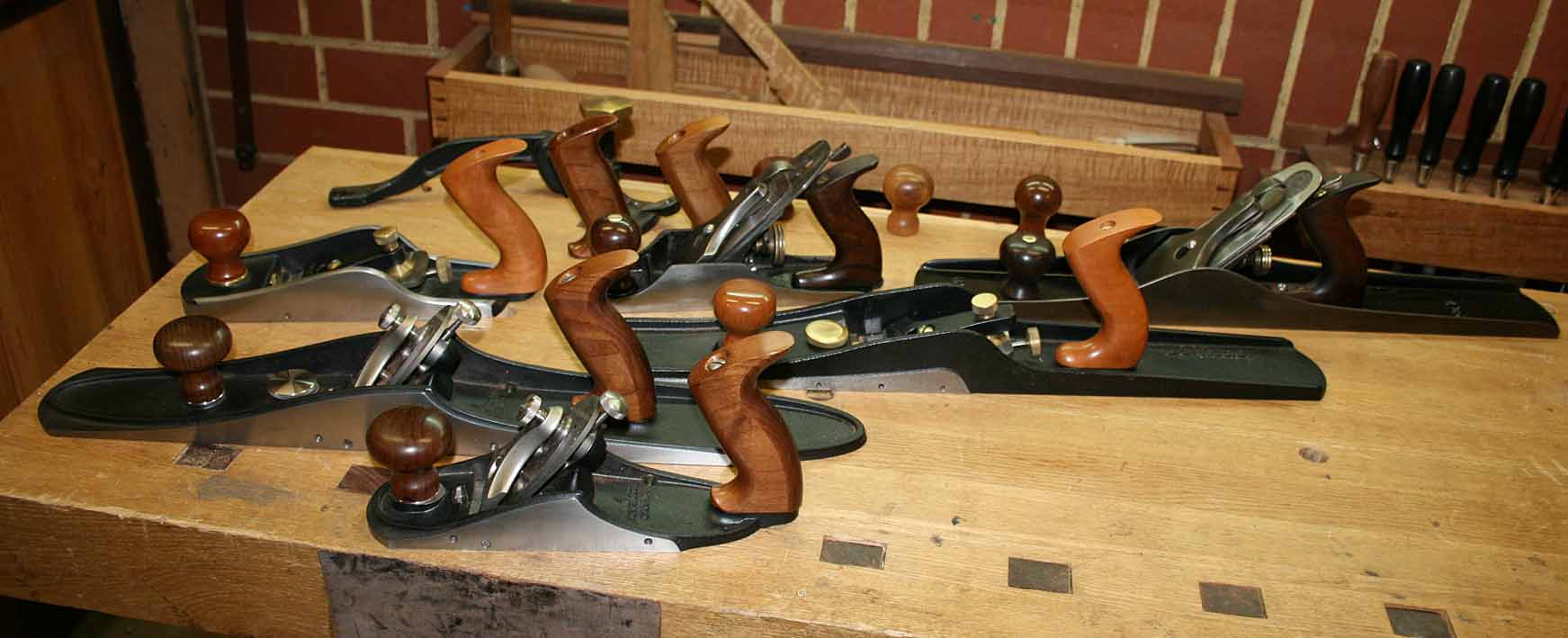Jacob
New Luddism. Wake up and resist.
The whole point of the Stanley/Bailey design is that with a thin blade it emulates the action of the older heavy bladed planes but with the huge advantages of ease of set, remove/replacement, sharpening, etc.I see some lovely furniture there Derek, but nice furniture doesn't answer the question,
of how thick of a shaving those premium bevel down double iron planes can take,
should someone be trying to decide whether to go to ebay or to buy a new ductile iron plane.
I see Daniel taking some smoothing shavings on a slab, of what looks to my eyes,
denser stuff than iroko, the shaving certainly suggests so.
I was looking to see this but with something bit less dense, perhaps spotted gum or some other stuff which one can dial it up a little and take some thicker shavings, rather than be restricted from the get go with such a dense species.
I believe this question to be of use to someone who cannot choose between,
and wants as little planes to care for as possible.
My last post which seems to have started quite a scuffle, should perhaps shown
a lesser dense example,
though I was trying to get across about the maximum for something dense,
where the no.5 1/2 shines, rather than something where one might say
a woodie would be more suitable for that.
I'd like to be put right on my query, as for a designer on paper....
very possible that the really really hefty double iron should come up trumps in
a test of heavy work compared to a thin Stanley/Record
To my eyes it looks like one can achieve heavier shavings with a double iron woodie, than a Bailey, but I've never seen this translate to the same thing in the premium planes.
Not much importance to me, needing that extra percentage for my reclaimed timbers
but for some who want the least amount of tools,
the question might have some merit.
Cheers
Tom
It does this very effectively which is why they are so popular and widely used. They win hands down, except for the disadvantage of greater weight. No contest!
n.b. there tends to be an emphasis at looking at shavings as a measure of performance. This is bonkers - you should get back to reality; look instead at the workpiece and the overall time/effort needed.
Last edited:






